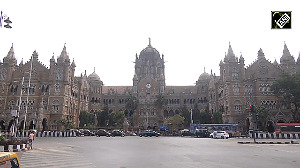
The Indian aluminium sector is characterised by large integrated players like Hindalco and National Aluminium Company (Nalco).
India has the fifth largest bauxite reserves with deposits of about 3 bn tonnes or 5% of world deposits while its share in world aluminium capacity rests at about 3%.
However, the per capita consumption of aluminium in India is abysmally low at under 1 kg as against nearly 20 kgs in the US and Europe, 15 kgs in Japan, 10 kgs in Taiwan and 4 kgs in China, which implies significant potential for the sector.
|
|
Reduction in custom duty on aluminum and copper from 15% to 10%
|
|
|
Lower excise duty to perk up domestic demand. |
| Budget 2002-03 |
|
Budget 2003-04 |
|
Budget 2004-05 |
|
|
|
|
|
|
The import duty on aluminium and aluminium products was reduced from 25% to 15%. |
|
Finance minister has reaffirmed the thrust on infrastructure development by announcing new infrastructure projects.
Peak customs duty reduced from 30% to 25%.
Decrease in freight rate by 5.3%. Confessional freight for short distance transportation.
Surcharge on corporate tax halved from the current 5% to 2.5%. |
|
Customs duty reduced from 20% to 15% on copper and consequently to 10% (July 2004 Budget)
Surcharge of 2% on account of education cess imposed on corporate tax. |
|
|
|
|
[Read more on Budget 2004-05] | |
| Key Positives |
|
|
|
Growth opportunities: The per capita aluminium consumption in India is less than 1 kg compared to about 5 kgs in China and Brazil and about 30 kgs in developed countries like the U.S. and Germany. And while globally there are about 3,000 applications of aluminium, in India one can see only around 300 applications. These factors leave a lot of room for the domestic sector to grow. |
|
|
The China effect: International aluminium prices continued to move into higher territories with China, a major consumer of the metal, continuing to register strong economic growth rates. This in turn led to an even stronger growth in aluminium consumption thus providing support to strengthening aluminium prices. |
|
|
Cost advantage: Indian aluminium producers are one of the lowest cost producers in the world. Abundant bauxite reserves and access to cheap labour have given aluminium manufacturers an edge over their international peers. Further, with relatively lesser fragmentation in the industry, companies have a greater control over pricing. | |
|
| Key Negatives |
|
|
|
Global watch: While the year 2004 was impressive for the global aluminium industry, led by the strong aluminium consumption growth in China and ample support from the US, mixed signals of economic growth from other major developed countries like the Europe and Japan needs to be kept a close watch. It must be noted that these two regions account for about 1/3rd of world aluminum consumption. |
|
|
Chinese imports: Further, with China increasing its domestic aluminium production, it will increasingly meet its metal requirements internally, thus reducing its import requirements, consequently putting pressure on world aluminium prices. |
|
|
Waning tariff protection: The reduction in import duties reduces the net tariff protection for the aluminum producers, which would keep a check on the domestic realisations of aluminium majors. | |
Budget 2005-06: Complete Coverage

Equitymaster.com is one of India's premier finance portals. The web site offers a user-friendly portfolio tracker, a weekly buy/sell recommendation service and research reports on India's top companies.









 © 2025
© 2025